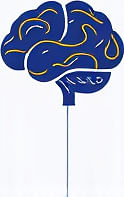Strategies for Managing Email with Autism in Remote Work Settings
 by Lilian Nienow
by Lilian Nienow
For adults with autism, handling email in remote work can pose unique challenges, but simple strategies can improve focus and productivity. This article explores practical tips to organize inboxes, reduce overwhelm, and achieve better work-life balance.

Remote work often relies on email as a primary communication tool, which can present specific difficulties for adults with autism. These challenges might include processing large volumes of information or interpreting tone in messages. Autism can make it hard to filter out distractions, leading to feelings of frustration.
In remote settings, maintaining productivity is essential. Many find that unchecked inboxes add to daily stress. By implementing structured approaches, individuals can create a more controlled environment. For example, setting aside dedicated times for email checks helps in managing the flow of information.
One effective method is to prioritize messages. Start by sorting emails into categories such as urgent, work-related, and personal. This allows for a clearer overview without immediate pressure. Using built-in features like folders or labels can streamline this process.
Another helpful technique involves creating routines. Begin each day with a quick review of the inbox, limiting it to a set period, say 15-20 minutes. This routine reduces the constant pull of notifications and supports better focus throughout the workday.
For those who experience sensory overload, minimizing visual clutter is key. Opt for simple email interfaces with high contrast and larger fonts. Adjusting settings to reduce animations or sounds can make the experience less intrusive.
Tools play a significant role in email management. Basic applications that filter spam or highlight important senders can save time. Experimenting with these options allows for customization based on individual needs.
Breaking down tasks is also beneficial. Instead of tackling the entire inbox at once, address emails in small batches. This method prevents burnout and maintains steady progress.
In the context of remote work, balancing professional and personal life is crucial. Establishing boundaries, such as not checking emails after hours, promotes overall well-being. Remote work demands self-discipline, and these practices foster that skill.
Consider the social aspect of emails. Misreading intent can lead to misunderstandings. To counter this, respond thoughtfully by rephrasing questions for clarity before replying.
Developing templates for common responses saves effort and ensures consistency. For instance, have pre-written messages for routine inquiries, which can be adapted as needed.
Tracking progress is important. Keep a simple log of how email habits improve over time. This reflection can motivate continued efforts and highlight what works best.
Practical Tips for Daily Use
Here are some actionable steps to incorporate into your routine:
- Set specific times: Choose two or three slots in the day for email, such as morning, afternoon, and end of day.
- Use search functions: Quickly find needed emails without scrolling through everything.
- Limit distractions: Turn off non-essential notifications to maintain concentration.
- Organize with tags: Assign tags to emails for easy retrieval later.
- Take breaks: Step away briefly if feeling overwhelmed to reset.
These tips are adaptable and can be adjusted based on personal preferences. Remember, it's about finding what fits your unique situation.
Overcoming Common Obstacles
Many adults with autism face similar issues, like difficulty with multitasking. Focusing on one email at a time can help. Additionally, seeking support from colleagues or mentors provides valuable insights.
Building a supportive network in remote environments is possible through virtual meetings or forums. Sharing experiences can reduce isolation and offer new ideas.
In conclusion, with consistent application of these strategies, managing email becomes less of a burden. The goal is to enhance productivity and support a healthier work-life balance for those with autism.
By integrating these approaches, individuals can navigate their remote work more effectively, leading to greater satisfaction and success.
